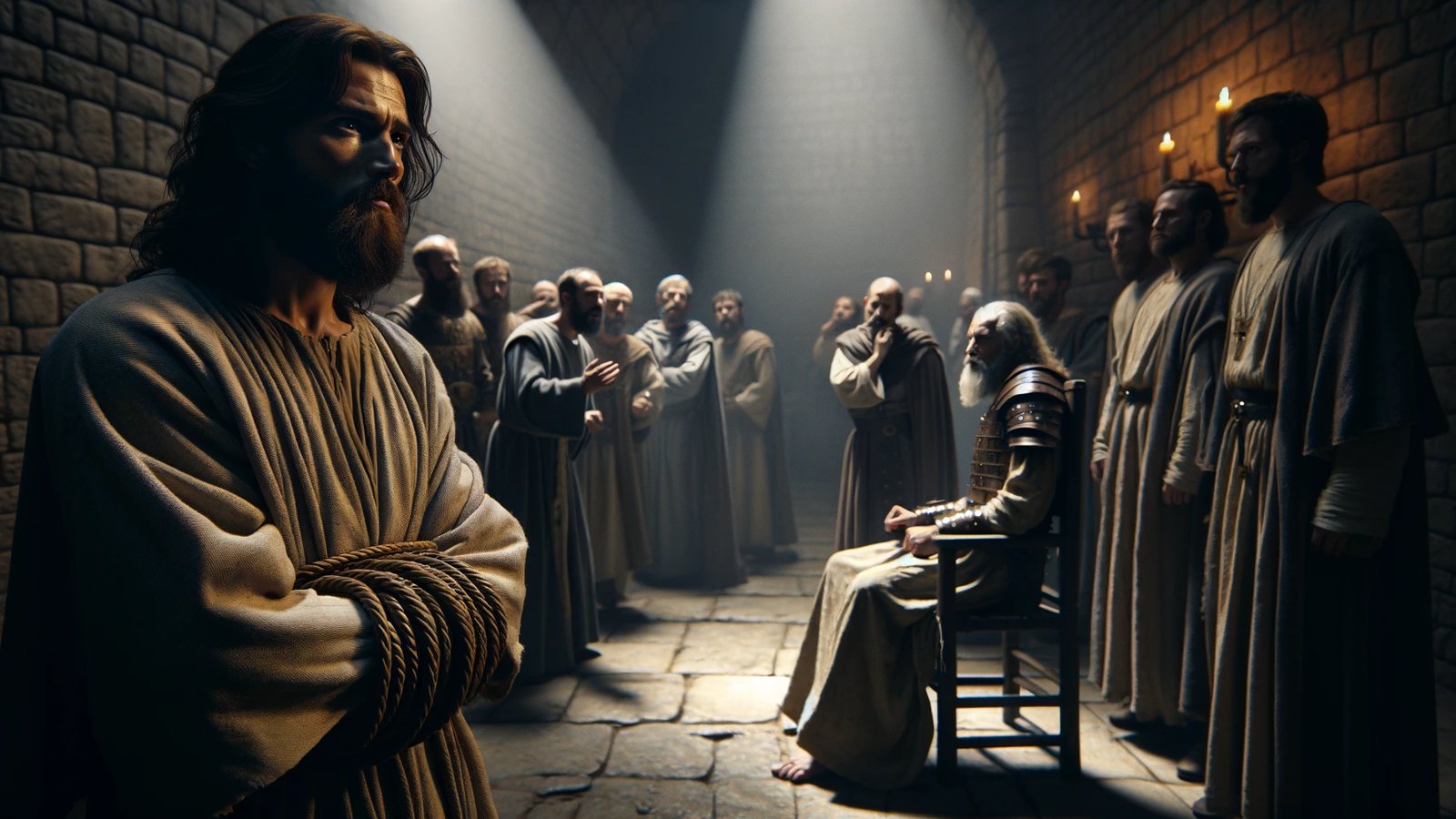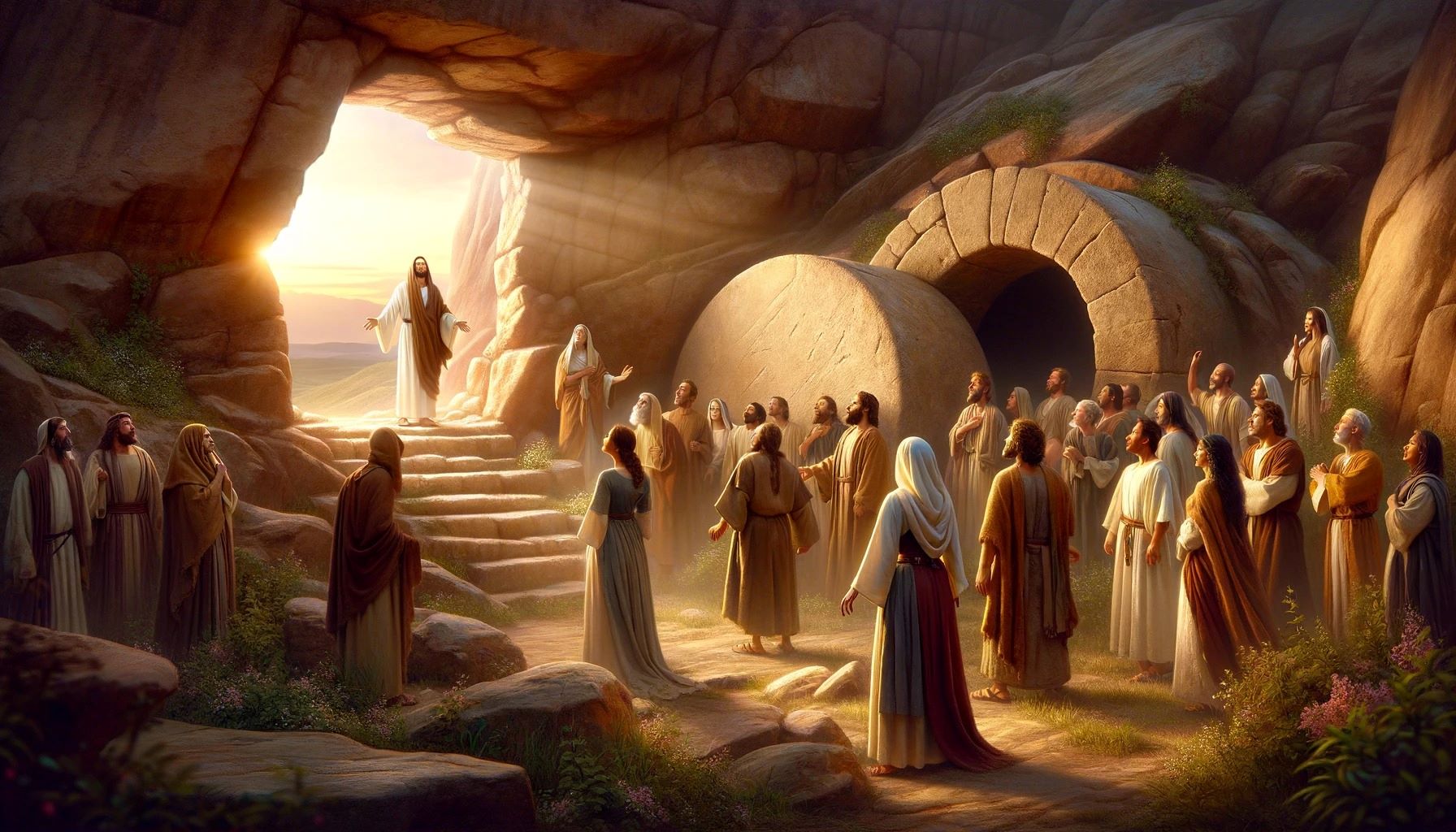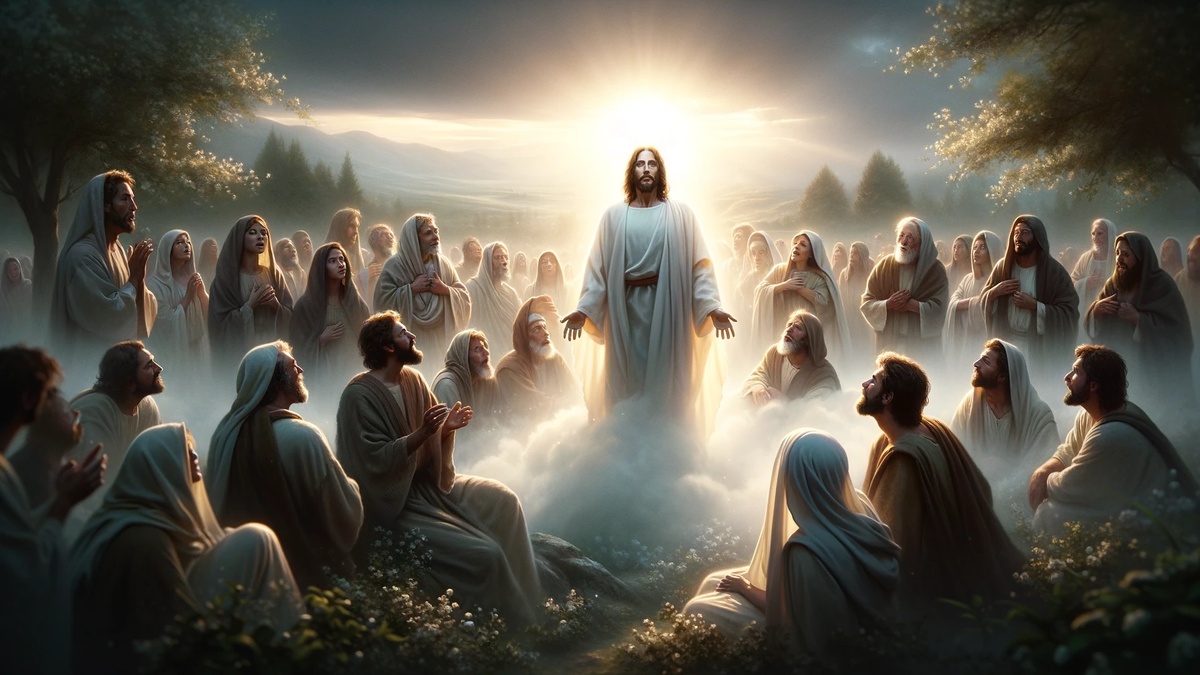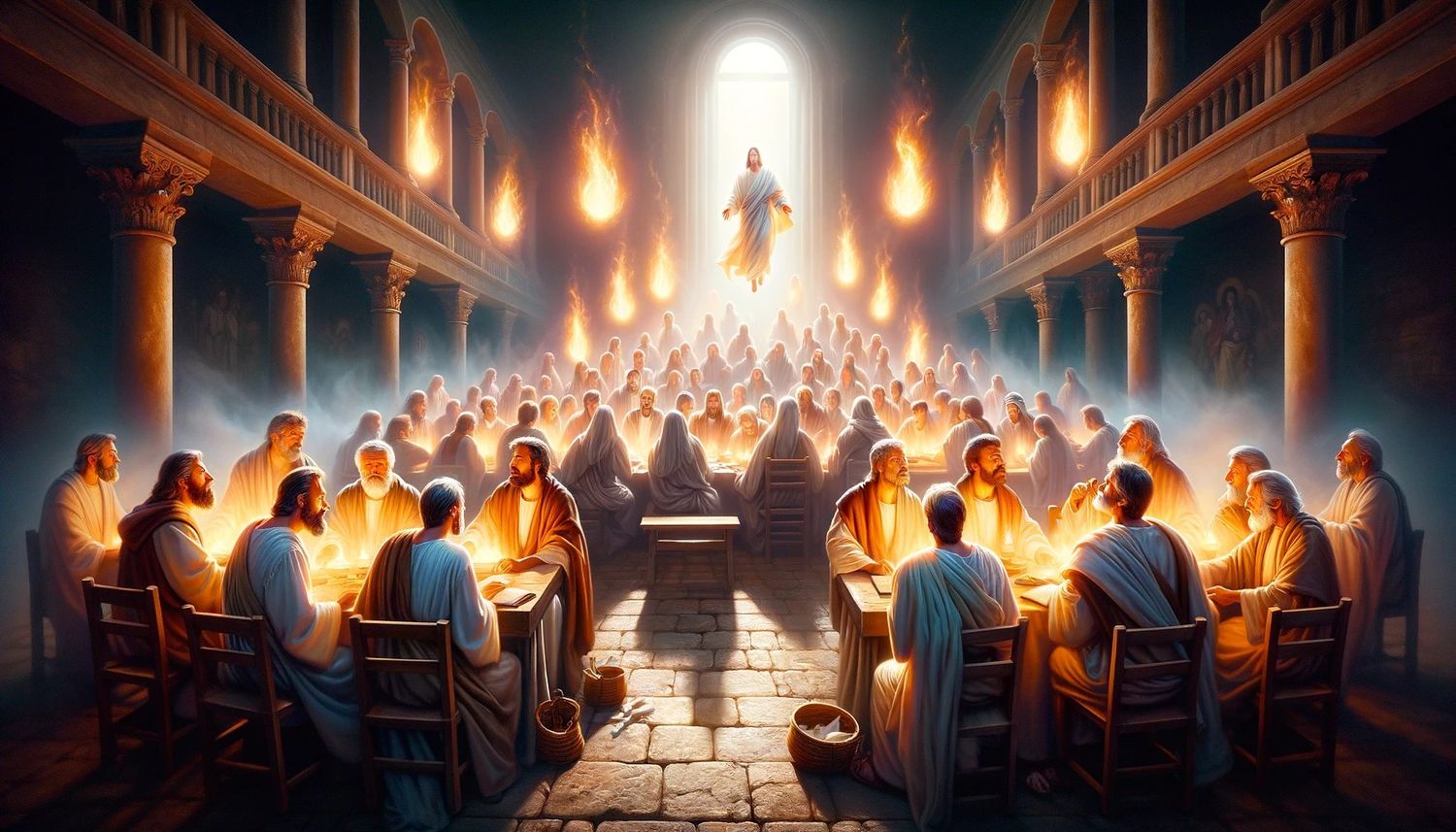Home>Christian Videos>Bible Stories>Which Gospels Talk About The Death And Resurrection Of Jesus


Bible Stories
Which Gospels Talk About The Death And Resurrection Of Jesus
Published: March 6, 2024
Jason DeRose, Managing Editor at Christian.net, uses his expertise in religion and journalism to deepen understanding of faith's societal impacts. His editorial leadership, coupled with a strong academic background, enriches the platform’s diverse content, earning him recognition in both journalism and religious circles.
Discover the Bible stories about the death and resurrection of Jesus in the Gospels. Explore the accounts of this pivotal event in Christian faith.
(Many of the links in this article redirect to a specific reviewed product. Your purchase of these products through affiliate links helps to generate commission for Christian.net, at no extra cost. Learn more)
Table of Contents
Introduction
The death and resurrection of Jesus Christ are central to the Christian faith. These events are documented in the four Gospels of the New Testament, each providing unique perspectives and details. Understanding which Gospels talk about the death and resurrection of Jesus is crucial for Christians seeking a comprehensive view of these pivotal moments in the life of Jesus. In this article, we will explore the accounts of Jesus' death and resurrection as depicted in the Gospels of Matthew, Mark, Luke, and John. Each Gospel offers valuable insights into the significance of these events and their impact on the Christian faith.
The Death of Jesus in the Gospel of Matthew
The Gospel of Matthew provides a detailed account of the events leading to the crucifixion and death of Jesus. In Matthew's Gospel, the death of Jesus is depicted as a fulfillment of Old Testament prophecies, emphasizing Jesus as the long-awaited Messiah. The narrative unfolds with Jesus' betrayal by Judas Iscariot, his arrest, and subsequent trials before the religious leaders and Roman authorities. The Roman governor, Pontius Pilate, ultimately succumbs to the demands of the crowd and sentences Jesus to be crucified. The crucifixion scene in Matthew's Gospel portrays the profound suffering endured by Jesus, including the mocking by onlookers and the darkness that shrouded the land. The death of Jesus on the cross is accompanied by supernatural events, such as the earthquake and the tearing of the temple curtain, signifying the significance of this momentous event.
The Gospel of Matthew underscores the sacrificial nature of Jesus' death, highlighting his role as the ultimate atonement for the sins of humanity. The narrative emphasizes Jesus' willingness to endure suffering and death for the redemption of mankind, portraying him as the obedient servant who fulfills God's divine plan. Matthew's account of Jesus' death resonates with the theme of fulfillment, as it connects the events of Jesus' crucifixion with the overarching purpose of God's redemptive work. The death of Jesus in the Gospel of Matthew serves as a pivotal moment that sets the stage for the subsequent resurrection, demonstrating the inseparable link between these two foundational aspects of Christian belief.
The Gospel of Matthew's portrayal of Jesus' death offers a profound reflection on the significance of his sacrificial act, inviting readers to contemplate the profound implications of this pivotal event. The narrative not only conveys the historical details of Jesus' crucifixion but also invites believers to recognize the spiritual and theological dimensions of his death. Through the lens of Matthew's Gospel, the death of Jesus emerges as a transformative and redemptive act that holds profound implications for the Christian understanding of salvation and the establishment of the new covenant. Matthew's account of Jesus' death serves as a cornerstone of Christian faith, shaping the theological framework of atonement and reconciliation between God and humanity.
In summary, the Gospel of Matthew provides a comprehensive and profound depiction of Jesus' death, framing it within the broader context of God's redemptive plan and the fulfillment of Old Testament prophecies. The narrative emphasizes the sacrificial nature of Jesus' death and its pivotal role in the establishment of the new covenant. Matthew's Gospel invites readers to contemplate the profound significance of Jesus' death and its enduring impact on the Christian faith.
The Resurrection of Jesus in the Gospel of Mark
The Gospel of Mark presents a succinct yet powerful account of the resurrection of Jesus Christ. Mark's narrative unfolds with the discovery of the empty tomb by Mary Magdalene, Mary the mother of James, and Salome. This discovery marks the beginning of the profound revelation that Jesus has risen from the dead, as foretold by the angel who proclaims, "He has risen! He is not here" (Mark 16:6). The Gospel of Mark emphasizes the astonishment and fear that gripped the women as they encountered the angel and received the news of Jesus' resurrection. This sense of awe and wonder underscores the extraordinary nature of this event and its transformative impact on the disciples and early followers of Jesus.
Mark's Gospel portrays the resurrection of Jesus as a pivotal moment that defies human comprehension and transcends the boundaries of earthly existence. The narrative highlights the initial disbelief and skepticism of the disciples upon hearing the reports of Jesus' resurrection, underscoring the radical nature of this miraculous event. The Gospel of Mark emphasizes the significance of Jesus' appearances to his disciples following his resurrection, validating the reality of this extraordinary occurrence and reaffirming the faith of those who had initially doubted.
The Gospel of Mark's depiction of Jesus' resurrection serves as a testament to the triumph of life over death and the fulfillment of God's redemptive plan. Mark's narrative invites readers to contemplate the profound implications of Jesus' resurrection, emphasizing its role in establishing the foundation of the Christian faith. The resurrection of Jesus in the Gospel of Mark stands as a testament to the transformative power of God's divine intervention, offering hope and assurance to believers throughout the ages.
In summary, the Gospel of Mark presents a compelling portrayal of Jesus' resurrection, emphasizing its transformative impact and the profound significance of this miraculous event. Mark's narrative invites readers to embrace the reality of Jesus' resurrection and its enduring relevance to the Christian faith, affirming the central tenet of the Gospel message – that Christ has risen, conquering death and offering the promise of eternal life to all who believe.
The Depiction of Jesus' Death and Resurrection in the Gospel of Luke
The Gospel of Luke offers a distinctive portrayal of Jesus' death and resurrection, emphasizing themes of compassion, forgiveness, and universal salvation. Luke's narrative of Jesus' death unfolds with poignant details, including the anguished prayer of Jesus in the Garden of Gethsemane, where he surrenders to the divine will amidst profound emotional turmoil. The subsequent betrayal, arrest, and trials of Jesus are depicted with a focus on the unjust treatment he endures, highlighting the innocence and righteousness of Jesus in the face of opposition and hostility. Luke's Gospel underscores the compassionate nature of Jesus, as he extends forgiveness even in the midst of his own suffering, exemplifying the essence of his teachings through his actions.
The crucifixion scene in the Gospel of Luke portrays the profound agony and suffering of Jesus, accompanied by the poignant exchange with the repentant criminal who acknowledges Jesus' innocence and seeks his mercy. This interaction reflects Luke's emphasis on the inclusive nature of God's grace and the offer of salvation to all, regardless of their past transgressions. The death of Jesus in Luke's Gospel is marked by the profound darkness that envelops the land, symbolizing the cosmic significance of this pivotal moment and the profound impact of Jesus' sacrificial act on the entire created order.
The resurrection account in the Gospel of Luke unfolds with the discovery of the empty tomb by the women who had accompanied Jesus during his ministry. The angelic proclamation, "Why do you look for the living among the dead? He is not here; he has risen!" (Luke 24:5-6), heralds the transformative reality of Jesus' resurrection. Luke's narrative emphasizes the initial disbelief and astonishment of the disciples upon hearing the reports of Jesus' resurrection, underscoring the radical nature of this miraculous event and its profound implications for the early followers of Jesus.
The Gospel of Luke's depiction of Jesus' resurrection highlights the tangible appearances of Jesus to his disciples, offering irrefutable evidence of his victory over death and the fulfillment of the promises he had made during his earthly ministry. Luke's narrative underscores the continuity of Jesus' identity and mission following his resurrection, as he imparts understanding to his disciples and commissions them to proclaim the message of repentance and forgiveness to all nations. The Gospel of Luke portrays the resurrection of Jesus as the culmination of God's redemptive plan, offering the assurance of eternal life and the outpouring of the Holy Spirit to empower the disciples for their mission.
In summary, the Gospel of Luke presents a profound and compassionate depiction of Jesus' death and resurrection, emphasizing the universal scope of God's redemptive work and the transformative impact of these pivotal events on humanity. Luke's narrative invites readers to embrace the message of forgiveness, reconciliation, and the promise of new life through the resurrection of Jesus, affirming the enduring relevance of these foundational beliefs to the Christian faith.
The Gospel of John's Account of Jesus' Death and Resurrection
The Gospel of John presents a profound and theological account of Jesus' death and resurrection, emphasizing the divine nature of Jesus and the redemptive significance of these pivotal events. John's narrative of Jesus' death unfolds with a focus on the overarching purpose of Jesus' mission, portraying him as the incarnate Word of God who willingly embraces the path to the cross for the salvation of humanity. The climactic scene of Jesus' crucifixion in John's Gospel underscores the profound suffering endured by Jesus, juxtaposed with the divine purpose of his sacrificial act. The portrayal of Jesus' crucifixion in John's Gospel emphasizes the fulfillment of God's redemptive plan, as Jesus declares, "It is finished" (John 19:30), signifying the completion of his atoning work and the establishment of the new covenant.
The Gospel of John's depiction of Jesus' death emphasizes the profound significance of his sacrificial act, portraying it as the ultimate manifestation of God's love for humanity. The narrative highlights the transformative impact of Jesus' death, as evidenced by the supernatural events that accompany this pivotal moment, including the darkness that shrouds the land and the tearing of the temple curtain. John's Gospel underscores the cosmic implications of Jesus' death, portraying it as the pivotal moment that inaugurates the new era of God's redemptive work and the reconciliation of humanity to God.
The resurrection account in the Gospel of John unfolds with the discovery of the empty tomb by Mary Magdalene, who encounters the risen Jesus in the garden. John's narrative emphasizes the intimate encounter between Jesus and Mary, underscoring the personal and relational nature of the resurrection. The Gospel of John portrays the resurrection of Jesus as the definitive vindication of his identity and mission, affirming his victory over death and the fulfillment of his promises to his disciples. The tangible appearances of Jesus to his disciples following his resurrection serve as a testament to the reality of this extraordinary event and the transformative impact it has on the early followers of Jesus.
John's Gospel presents the resurrection of Jesus as the foundation of the Christian faith, emphasizing its central role in affirming the identity of Jesus as the Son of God and the source of eternal life. The narrative invites readers to embrace the reality of Jesus' resurrection and its enduring significance for the Christian understanding of salvation and the assurance of new life. The Gospel of John's account of Jesus' death and resurrection stands as a testament to the profound theological insights and the transformative power of these pivotal events, affirming the foundational beliefs of the Christian faith.
In summary, the Gospel of John offers a profound and theological account of Jesus' death and resurrection, emphasizing the divine nature of Jesus and the redemptive significance of these pivotal events. John's narrative invites readers to contemplate the profound implications of Jesus' sacrificial act and the transformative reality of his resurrection, affirming the enduring relevance of these foundational beliefs to the Christian faith.
Read more: Which Gospels Include Baptism Of Jesus
Conclusion
In conclusion, the Gospels of Matthew, Mark, Luke, and John each offer unique and profound depictions of Jesus' death and resurrection, providing valuable insights into the significance of these pivotal events. Matthew's Gospel emphasizes the sacrificial nature of Jesus' death and its fulfillment of Old Testament prophecies, framing it within the broader context of God's redemptive plan. Mark's Gospel presents a succinct yet powerful account of the resurrection, highlighting the transformative impact of this miraculous event on the disciples and early followers of Jesus. Luke's Gospel offers a compassionate portrayal of Jesus' death and resurrection, emphasizing themes of forgiveness, reconciliation, and the universal scope of God's redemptive work. John's Gospel provides a profound and theological account of Jesus' death and resurrection, underscoring the divine nature of Jesus and the redemptive significance of these pivotal events. Collectively, these Gospels invite readers to embrace the reality of Jesus' death and resurrection, affirming the enduring relevance of these foundational beliefs to the Christian faith.














